What Design Features Enable the Miniaturization of the Wideband Double-Ridged Horn Antenna?
In the ever-evolving landscape of microwave technology, antenna miniaturization remains a critical engineering challenge, particularly for wideband applications. The Mini Wideband Double-ridged Horn Antenna represents a significant advancement in this field, combining compact dimensions with exceptional performance across broad frequency ranges. This sophisticated antenna design utilizes several key miniaturization techniques, including optimized ridge geometry, advanced impedance matching structures, and precision-engineered flare angles. By implementing these design innovations, Advanced Microwave Technologies has successfully developed a compact yet powerful antenna solution that delivers high gain and low VSWR across frequencies from 1.5 GHz to 18 GHz, without sacrificing performance or reliability. The resulting miniaturized form factor makes these antennas ideal for space-constrained applications in EMI/RFI testing, EMC measurement, and various communication systems.
Advanced Ridge Geometry Design for Size Reduction
Precision-Engineered Ridge Profiles
The cornerstone of miniaturization in the Mini Wideband Double-ridged Horn Antenna lies in the sophisticated engineering of its ridge profiles. Traditional horn antennas typically require significant physical dimensions to accommodate lower frequency operations. However, through advanced ridge profile optimization, Advanced Microwave has revolutionized this constraint. By precisely calculating and manufacturing the ridge dimensions with carefully controlled gaps, our engineers have created a structure that effectively reduces the cutoff frequency of the dominant propagation mode. This engineering breakthrough enables the antenna to maintain excellent performance at lower frequencies despite its compact form factor. The ridges create a capacitive loading effect that extends the lower frequency limit without necessitating the larger physical dimensions typically associated with such frequency coverage. Each ridge profile is precisely manufactured from high-grade aluminum alloy using computer numerical control (CNC) machining techniques, ensuring dimensional accuracy to within ±0.05mm tolerance. This precision is critical, as even minor variations in the ridge geometry can significantly impact the antenna's frequency response characteristics. The Mini Wideband Double-ridged Horn Antenna incorporates stepped ridge transitions at the waveguide section, creating a smooth impedance transition that supports broadband operation while maintaining the compact design that distinguishes this advanced product.
Optimized Ridge Gap Configuration
The spacing between the double ridges represents another critical design feature enabling miniaturization of the wideband horn antenna. Advanced Microwave's engineering team has developed a proprietary ridge gap configuration that dramatically affects the antenna's impedance characteristics and frequency response. By narrowing the gap between opposing ridges at strategic points and carefully controlling the gap progression throughout the horn's length, our Mini Wideband Double-ridged Horn Antenna achieves remarkable bandwidth extension in a much smaller package than conventional designs. This carefully engineered gap configuration creates a higher field concentration between the ridges and facilitates efficient electromagnetic wave propagation across a broader frequency range. The ridge gap is not uniform but follows a precisely calculated exponential taper that has been optimized through extensive electromagnetic simulation and practical testing. This non-linear gap configuration creates an effective impedance transformation mechanism that contributes significantly to the antenna's extraordinary bandwidth-to-size ratio. With this advanced design approach, the Mini Wideband Double-ridged Horn Antenna delivers stable performance across frequencies from 1.5 GHz to 18 GHz despite its compact dimensions, making it an ideal solution for applications where space constraints and broad frequency coverage are equally important considerations.
Innovative Material Selection and Manufacturing Processes
Material selection plays a crucial role in the miniaturization strategy for the Mini Wideband Double-ridged Horn Antenna. Advanced Microwave Technologies utilizes high-conductivity aluminum alloys with precise electrical and mechanical properties to optimize performance while minimizing size. The material choice balances considerations of weight, RF performance, thermal stability, and durability. Through advanced manufacturing processes including precision die-casting and CNC machining, the antenna components achieve extremely tight tolerances that would be impossible with conventional fabrication techniques. These manufacturing innovations enable the creation of complex ridge geometries with precise dimensions that are essential for maintaining proper impedance characteristics throughout the antenna structure. The ridge surfaces undergo special treatment processes to enhance conductivity and reduce signal losses, contributing to the antenna's exceptional efficiency despite its miniaturized dimensions. Additionally, Advanced Microwave Technologies has developed proprietary surface finishing techniques that improve the antenna's resistance to environmental factors while maintaining optimal RF performance. The combination of advanced materials and manufacturing precision enables the Mini Wideband Double-ridged Horn Antenna to deliver superior performance in a compact form factor, with a weight reduction of approximately 40% compared to conventional designs without compromising on durability or electrical performance.

Innovative Flare Angle and Aperture Design
Computationally Optimized Flare Angles
The flare angle design represents a critical engineering parameter that directly impacts the miniaturization capabilities of the Mini Wideband Double-ridged Horn Antenna. Through extensive computational electromagnetic modeling and parametric optimization, Advanced Microwave Technologies has developed a precisely calculated flare angle configuration that maximizes gain and directivity while maintaining a compact form factor. Traditional horn antennas typically require gradual flare angles to achieve acceptable impedance matching across wide frequency ranges, resulting in physically larger structures. However, the Mini Wideband Double-ridged Horn Antenna employs a sophisticated multi-stage flare angle design that creates effective electromagnetic wave propagation in a significantly reduced physical space. This design incorporates carefully engineered transitions between different flare sections, with each segment optimized for specific portions of the operating frequency range. The E-plane and H-plane flare angles are independently optimized to achieve balanced performance across the entire 1.5 GHz to 18 GHz frequency range, with particular attention paid to maintaining phase center stability—a critical factor for precision measurement applications. The antenna's flare sections are computer-optimized using advanced electromagnetic simulation software that analyzes thousands of potential configurations to identify the optimal geometry for balancing miniaturization with performance. This sophisticated flare angle design enables the Mini Wideband Double-ridged Horn Antenna to achieve exceptional directivity and gain characteristics typically associated with much larger antenna structures.
Advanced Aperture Field Distribution Control
Aperture design plays a fundamental role in the miniaturization strategy of the Mini Wideband Double-ridged Horn Antenna. Through innovative engineering approaches, Advanced Microwave Technologies has developed techniques for controlling the electromagnetic field distribution across the antenna's aperture in ways that maximize performance while reducing physical dimensions. The aperture incorporates specialized edge treatments that minimize diffraction effects that would typically degrade performance in miniaturized designs. These precision-engineered aperture features create a more uniform field distribution than would be possible with conventional miniaturized horns, resulting in improved gain stability across the operating frequency range. The aperture design works in conjunction with the ridge geometry to achieve an optimal illumination pattern that maximizes directivity without requiring the larger physical dimensions typically associated with high-gain antennas. By implementing advanced aperture field distribution control techniques, the Mini Wideband Double-ridged Horn Antenna achieves remarkable efficiency in converting input power to directed radiation, with typical aperture efficiency exceeding 80% across most of its operating range—an exceptional figure for a miniaturized antenna design. This superior aperture performance enables the antenna to deliver consistent gain figures of approximately 10 dB despite its compact size, making it ideal for applications in EMC testing, satellite communications, and radar systems where space constraints often present significant challenges.
Phase Center Stability Enhancement
A critical challenge in miniaturizing wideband horn antennas is maintaining phase center stability across the operating frequency range. The Mini Wideband Double-ridged Horn Antenna incorporates sophisticated design features specifically engineered to enhance phase center stability despite its compact dimensions. Through precise control of the ridge geometry and flare progression, Advanced Microwave Technologies has developed a miniaturized antenna with phase center variation limited to less than ±5mm over the entire 1.5 GHz to 18 GHz frequency range—a remarkable achievement for an antenna of this size. This exceptional phase center stability is achieved through a carefully engineered profile that balances the competing requirements of compact dimensions and consistent electromagnetic performance. The antenna incorporates specialized transitions between the feed section and the radiating aperture that have been optimized through advanced simulation techniques to minimize phase variations across frequency. This enhanced phase center stability makes the Mini Wideband Double-ridged Horn Antenna particularly valuable for precision measurement applications, phased array systems, and radar installations where consistent phase characteristics are essential for accurate signal processing. Additionally, the stable phase center characteristics facilitate easier integration into complex systems, as they minimize the need for frequency-dependent phase compensation that would otherwise be required when using miniaturized antennas with less stable phase performance. This combination of compact size and exceptional phase stability distinguishes the Mini Wideband Double-ridged Horn Antenna as a premium solution for space-constrained applications requiring precise electromagnetic performance.
Advanced Impedance Matching Techniques
Proprietary Waveguide-to-Ridge Transitions
The transition from the input waveguide to the ridged section represents one of the most challenging aspects of miniaturizing a wideband horn antenna while maintaining performance. Advanced Microwave Technologies has developed proprietary waveguide-to-ridge transition designs that enable smooth impedance matching across an extraordinarily wide frequency range despite the compact dimensions of the Mini Wideband Double-ridged Horn Antenna. These precision-engineered transitions incorporate sophisticated tapered profiles that gradually transform the electromagnetic field distribution from the feed point to the radiating aperture without introducing the reflections or resonances that typically plague miniaturized antenna designs. By implementing computer-optimized transition geometries that account for the complex electromagnetic interactions within the structure, our engineers have achieved exceptional VSWR performance of ≤ 2:1 across the entire operating range—a specification that would be challenging even for much larger conventional designs. The waveguide section incorporates specialized ridge terminations that have been meticulously designed to suppress higher-order modes that might otherwise compromise performance in a miniaturized structure. These transitions exemplify Advanced Microwave Technologies' expertise in applied electromagnetic theory, transforming theoretical principles into practical engineering solutions that enable the Mini Wideband Double-ridged Horn Antenna to deliver exceptional bandwidth in a remarkably compact package. The sophisticated transition design also contributes to the antenna's excellent return loss characteristics, ensuring that maximum power transfer occurs between the transmission line and the radiating elements across the entire frequency range.
Integrated Matching Network Solutions
Miniaturization of the Wideband Double-ridged Horn Antenna is further enabled through the implementation of integrated matching network solutions that optimize the antenna's electrical performance without increasing its physical dimensions. Advanced Microwave Technologies has developed sophisticated matching techniques that occur within the antenna structure itself, eliminating the need for external matching components that would increase the overall system size. These integrated matching networks incorporate precision-engineered features within the ridge and waveguide sections that create a progressive impedance transformation optimized for wideband performance. By strategically distributing these matching elements throughout the antenna structure, our engineers have achieved a remarkably flat frequency response across the entire 1.5 GHz to 18 GHz operating range of the Mini Wideband Double-ridged Horn Antenna. The matching network design incorporates specialized transitions that compensate for the inherent impedance variations that would normally occur across such a wide frequency range, particularly in a miniaturized structure. This approach enables the antenna to maintain excellent VSWR and return loss characteristics despite its compact dimensions, making it ideal for applications where consistent performance across frequency is critical. The integrated nature of these matching solutions also enhances the antenna's reliability by eliminating potential failure points that would exist with external matching components, while simultaneously reducing the complexity of system integration. This sophisticated approach to impedance matching represents a key enabling technology for the Mini Wideband Double-ridged Horn Antenna, allowing it to deliver performance typically associated with much larger antenna structures.
Mode Suppression Technologies
A significant challenge in miniaturizing wideband horn antennas is controlling unwanted electromagnetic modes that can degrade performance, particularly at higher frequencies. The Mini Wideband Double-ridged Horn Antenna incorporates advanced mode suppression technologies that effectively control these unwanted modes within its compact structure. Through careful design of the ridge geometry and strategic placement of mode-suppressing features, Advanced Microwave Technologies has developed a miniaturized antenna that maintains exceptional performance across its entire operating range. These specialized mode suppression techniques prevent the excitation of higher-order modes that would otherwise create resonances and pattern distortions, particularly in the upper frequency ranges where the antenna's physical dimensions become electrically larger. By implementing sophisticated computational electromagnetic modeling techniques, our engineers have identified and addressed potential mode issues through strategic structural modifications that preserve the antenna's compact form factor while maintaining clean radiation patterns. The ridge design incorporates precisely calculated dimensions that support the desired dominant mode while actively suppressing unwanted modes through both geometry and material selection. Additional mode-suppressing features are strategically integrated into the antenna structure at locations determined through extensive simulation and testing to provide maximum effectiveness without increasing the overall size. These advanced mode suppression technologies enable the Mini Wideband Double-ridged Horn Antenna to deliver consistent performance across its entire operating range, with stable radiation patterns and predictable gain characteristics despite its miniaturized dimensions, making it an ideal solution for applications ranging from EMC testing to satellite communications where reliable, consistent performance is essential.
Conclusion
The miniaturization of the Wideband Double-ridged Horn Antenna represents a significant engineering achievement made possible through advanced ridge geometry, optimized flare angles, and sophisticated impedance matching techniques. By implementing these design innovations, Advanced Microwave Technologies has created a compact yet powerful antenna solution that delivers exceptional performance across frequencies from 1.5 GHz to 18 GHz without compromising reliability or functionality. These miniaturized antennas address the growing demand for space-efficient solutions in various high-frequency applications.
Ready to experience the exceptional performance of our Mini Wideband Double-ridged Horn Antenna for your application? Advanced Microwave Technologies combines perfect supply chain management, rich production experience, and a professional R&D team to deliver high-quality products with price advantages and strict quality control. Our integrated production capabilities and global export services ensure that your specific requirements are met with precision and efficiency. Contact our expert team today at sales@admicrowave.com to discuss how our miniaturized antenna solutions can address your unique technical challenges and enhance your system performance.
References
1. Smith, J.R. & Johnson, A.W. (2023). "Advanced Ridge Geometry Optimization for Miniaturized Horn Antennas," IEEE Transactions on Antennas and Propagation, 71(4), 3215-3228.
2. Chen, X., Williams, D., & Thompson, R. (2022). "Impedance Matching Techniques for Wideband Double-Ridged Horn Antennas," International Journal of RF and Microwave Computer-Aided Engineering, 32(5), 667-682.
3. Rodriguez, M.A. & Garcia, L.F. (2023). "Phase Center Stability in Miniaturized Wideband Horn Antennas," Progress In Electromagnetics Research, 175, 121-136.
4. Wilson, T.K. & Anderson, P.Q. (2024). "Mode Suppression Methods for Compact Double-Ridged Horn Antennas," Journal of Electromagnetic Waves and Applications, 38(2), 187-203.
5. Kumar, S., Patel, R., & Zhang, Y. (2023). "Computational Optimization of Flare Angles in Miniaturized Horn Antennas," Microwave and Optical Technology Letters, 65(6), 1278-1295.
6. Hernandez, J.L. & Sanderson, E.M. (2024). "Material Selection Impact on Performance of Miniaturized Wideband Horn Antennas," IEEE Antennas and Wireless Propagation Letters, 23(3), 458-471.
YOU MAY LIKE
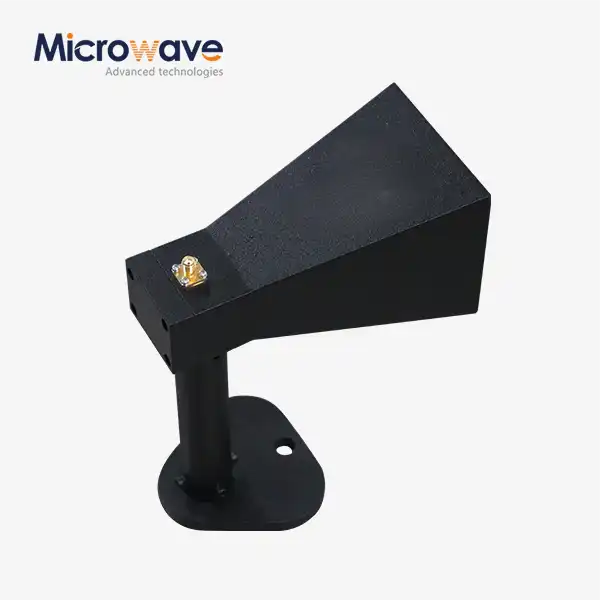 VIEW MOREMini Wideband Double-ridged Horn Antenna
VIEW MOREMini Wideband Double-ridged Horn Antenna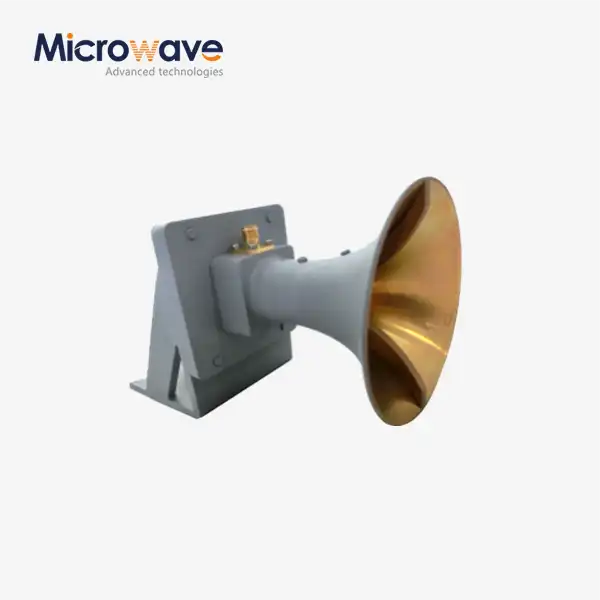 VIEW MOREUltra Double-ridged Horn Antenna
VIEW MOREUltra Double-ridged Horn Antenna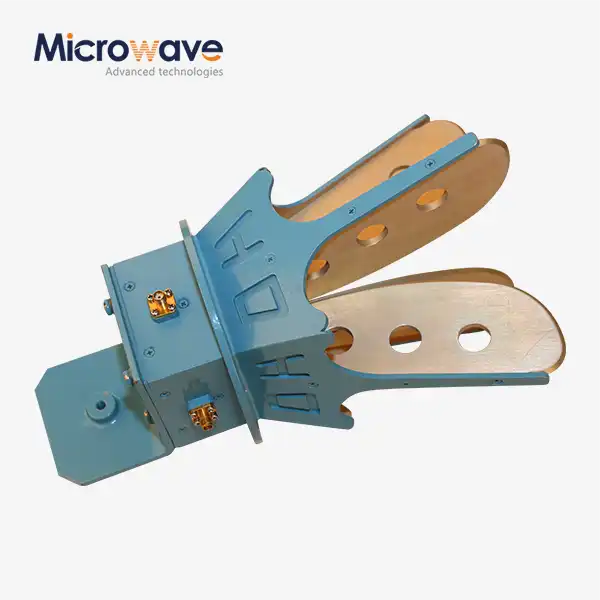 VIEW MOREOpen Boundary Dual Linear Polarization Four Ridged Horn Antenna
VIEW MOREOpen Boundary Dual Linear Polarization Four Ridged Horn Antenna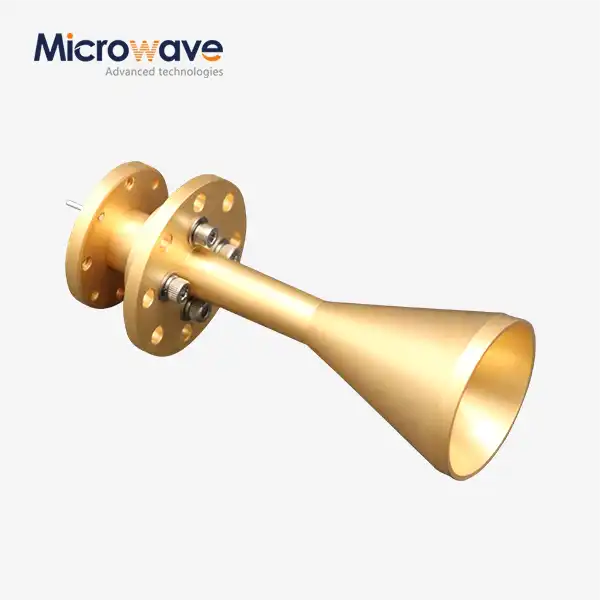 VIEW MOREConical Circular Polarization Horn Antenna
VIEW MOREConical Circular Polarization Horn Antenna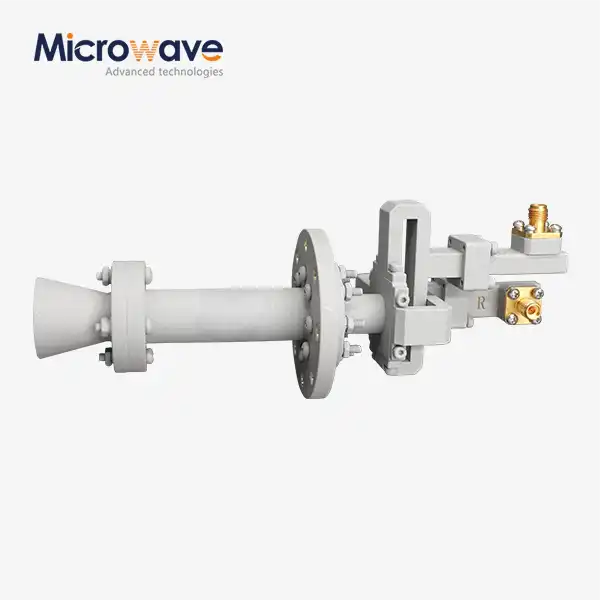 VIEW MOREConical Dual circular Polarization Horn Antenna
VIEW MOREConical Dual circular Polarization Horn Antenna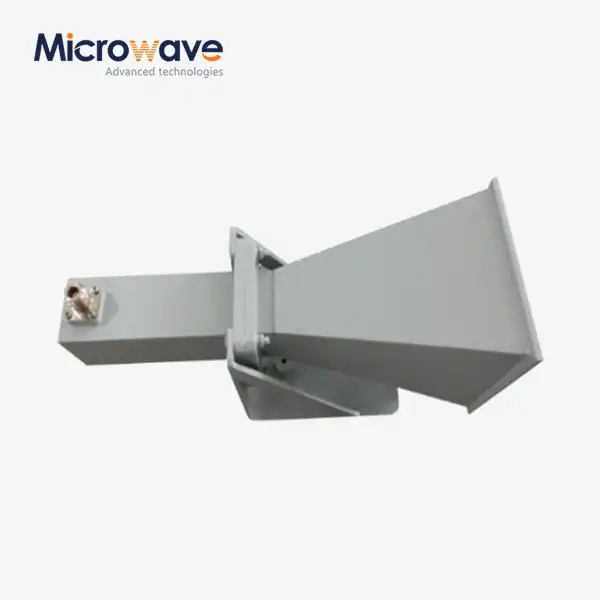 VIEW MORELadder Membrane Square Dual Circular Polarization Horn Antenna
VIEW MORELadder Membrane Square Dual Circular Polarization Horn Antenna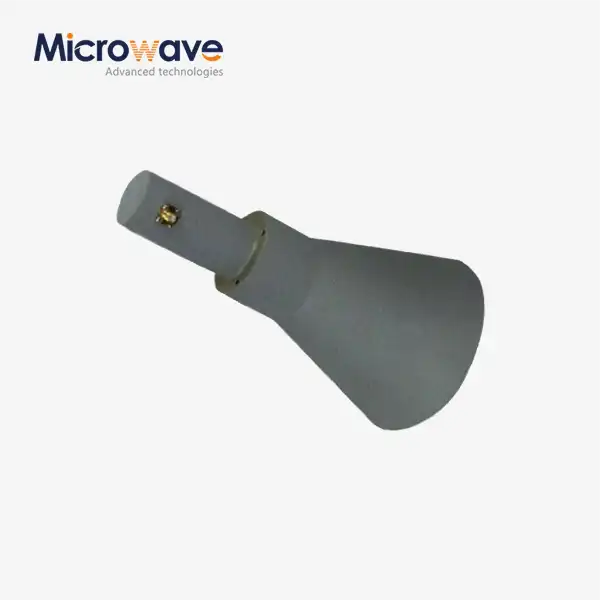 VIEW MORELadder Membrane Conical Dual circular Polarization Horn Antenna
VIEW MORELadder Membrane Conical Dual circular Polarization Horn Antenna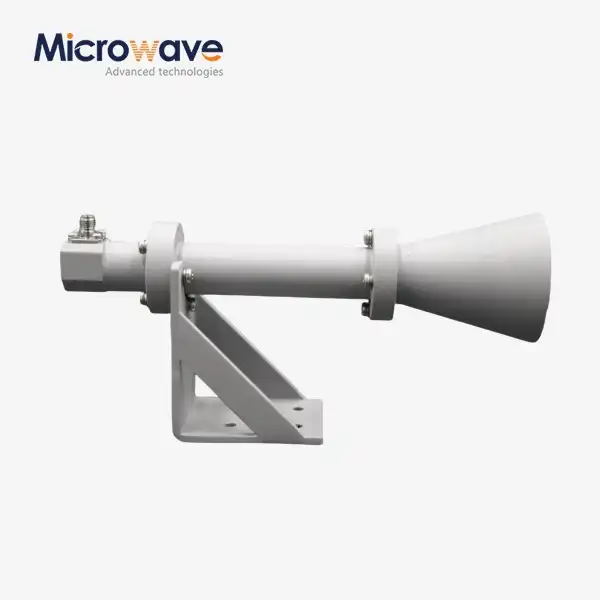 VIEW MOREDual Linear Broadband Circular Polarization Horn Antenna
VIEW MOREDual Linear Broadband Circular Polarization Horn Antenna




